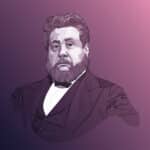The Old Testament, for many, is a foreign document. Studying the Old Testament canon can help us to familiarize ourselves with this gift that is part of God’s Word.
By Jesus’ time, the Hebrew “Scriptures” included all the books in our present-day Old Testament. We don’t know, however, exactly how these books were recognized as God’s Word and put into the canon.
Before considering one possible scenario, let’s look at the organizational differences between the Jewish Scriptures and the Christian Old Testament. While the content is exactly the same, the ordering of the biblical books is vastly different. Let’s look at the ordering of the Old Testament canon.
Ordering the Old Testament
The Christian Old Testament has 39 books ordered by book type: legal (5), historical (12), wisdom poetry (5), and prophetic (17).
Thus, the last book in the present-day Old Testament is the last prophet, Malachi.
The Hebrew Scriptures take a different shape. The Hebrew Scriptures divide into 24 books, combining books like 1 and 2 Samuel into a single volume. This is also the case with 1 and 2 Chronicles, 1 and 2 Kings, as well as Ezra and Nehemiah. It also combines the last 12 prophetic books (commonly known as the Minor Prophets) into one. This 24-book collection is known as the Tanakh, which is an acronym for the three divisions: Torah (Law), Nevi’im (prophets), and Ketuvim (writings).
Because of this arrangement, the last book in the Hebrew Scriptures is Chronicles.
In the New Testament, we see clear evidence of this threefold division, whenever we encounter the phrase “the Law and the Prophets” (e.g., Matthew 7:12; Romans 3:21). Jesus also specifically identifies these three divisions (Luke 24:44, where “Psalms” as the first book was commonly used to refer to the whole Writings).
The Old Testament Canon’s Development
We have very little historical explanation for how exactly the books of the Hebrew Scripture came to be viewed as authoritative.
Moses wrote the first portion of the Old Testament (Genesis to Deuteronomy) around 1500-1400 BC. Over the next millennium, many different people penned the rest of the Old Testament. These form two groups of books known as the Prophets and the Writings. But how did people know which of the Jewish writings were really God’s Word?
We find some evidence in the Old Testament itself (e.g., Exodus 24:3-7; Deuteronomy 31:26; 2 Kings 23:1-3; Nehemiah 8:1–9:38), some evidence in the New Testament as mentioned earlier, and some evidence from extra-biblical writings such as the works of the first-century Jewish historian Josephus.
We also know that after Jerusalem’s destruction in AD 70 by the Romans, the Jews had a council at Jamnia in AD 90 to discuss, among other things, the canon. At this council, they “closed” the canon, determining the final list of which sacred writings, dated before Jesus, they recognized as God’s Word.
F. F. Bruce, a Christian scholar, suggests the following:
A common, and not unreasonable, account of the formation of the Old Testament canon is that it took shape in three stages, corresponding to the three divisions of the Hebrew Bible. The Law was first canonized (early in the period after the return from the Babylonian exile), the Prophets next (late in the third century BC). When these two collections were closed, everything else that was recognized as holy scripture had to go into the third division, the Writings, which remained open until the end of the first century AD, when it was ‘closed’ at Jamnia.[1]
Bruce notes that, although this is a popular view, there really is no solid evidence for it. We do know for a fact that the Jews debated about which books to include in the canon. For instance, they questioned both Esther and the Song of Songs because both books do not mention the name of God, and, at first glance, look to be non-religious.
Other Jewish writings (the Apocrypha), written a few centuries before Jesus’ time, weren’t canonized by the Jews. Christians didn’t canonize them either, as Jesus never cited them as Scripture in the Gospels.
Reading the Old Testament
The Old Testament, like the New Testament, according to Christians, is a gift from God. Though it can feel difficult at times, we encourage you to read the whole Bible. Here at Bibles.net, we want to help you learn how to read the Bible for yourself.
. . .
Source
[1] F.F. Bruce, The Canon of Scripture (United States: InterVarsity Press, 1988), 36.





